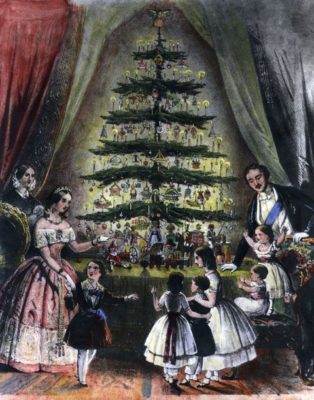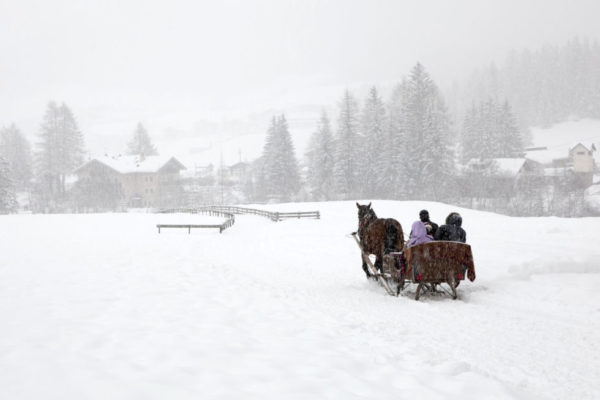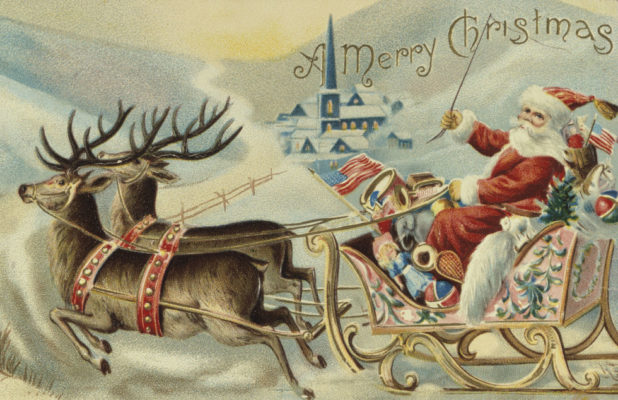Uncategorized
18 Things You Probably Didn’t Know About Christmas
Christmas is an ancient celebration, heaped in literally centuries of tradition. But some of our seasonal favorites have surprising origins. Read on, and have a happy holiday season!
1. It wasn’t always on December 25.

Though Christmas celebrates the birth of Jesus Christ, there is no mention of December 25 in the Bible. (Most historians believe he was actually born in the spring.) It wasn’t chosen as the official holiday until the 3rd Century. Some argue that the date was picked because it coincided with the pagan festival of Saturnalia, celebrating agricultural god Saturn with partying and gift-giving.
2. Thank Prince Albert for your tree.

Another Christmas tradition stemming from Saturnalia was the Christmas tree: During the winter solstice, branches served as a reminder of spring — and became the root of our Christmas tree. The Germans are credited with first bringing evergreens into their homes and decorating them, a tradition which made it’s way to the United States in the 1830s. But it wasn’t until Germany’s Prince Albert introduced the tree to his new wife, England’s Queen Victoria, that the tradition took off. The couple were sketched in front of a Christmas tree in 1848 — and royal fever did its work.
3. Coca-Cola came up with the red suit.

Well, Santa wore a variety of colorful suits through the years — including red, blue, white, and green — but legend has it that the popular image of his red coat came from a 1930s ad by Coca Cola.
4. St. Nick was more generous than jolly.

Sure, you probably knew that Santa Claus came from St. Nicholas, a Christian bishop living in the fourth century AD. St. Nicholas gave away his abundant inheritance to help the needy. He also was known for good deeds like rescuing sistersfrom prostitution. As his legend spread, he was eventually known by names like as Sinter Klaas in Dutch — which morphed into Santa Claus. He’s not just the protector of children, either: St. Nicholas is also the patron saint of unmarried women, prisoners, thieves and pawnbrokers. How’s that for a naughty list?
5. Stockings have a funny root.

Gift-giving also came from Holland. There, St. Nicholas’ feast day is celebrated December 6 by children leaving out shoes overnight and finding little gifts from St. Nicolas in the morning. According to legend, hanging stockings came from the take of a poor man who couldn’t afford his three daughters dowries: St. Nick dropped a bag of gold down their chimney one night so that the eldest could wed — but it fell into a stocking that was drying by the fire!
6. Rudolph was almost named Reginald.

A copywriter named Robert L. May first invented the oddball reindeer in 1939 as a marketing gimmick for Montgomery Ward’s holiday coloring books. (May considered naming the beloved misfit Reginald and Rollo.) And his nose wasn’t originally going to be red: A red nose was viewed as a sign of sign of chronic alcoholism, and Montgomery Ward didn’t want him to seem like a drunkard. Good thing they changed it. “Reginald, the blue-nosed reindeer” doesn’t have quite the same ring … or charm.
7. Jingle Bells was originally a Thanksgiving song.

James Lord Pierpont, an organist from Savannah, Georgia, first performed a song he wrote, “The One Horse Open Sleigh,” at his church’s Thanksgiving concert. The song was re-published in 1857 and given the title of today. Bonus fact: It’s also the first song broadcast from space. On December 16, 1965, the Gemini 6 crew serenaded Mission Control after they reported seeing a “red-suited” astronaut.
8. Christmas sends at least 15,000 people to the ER.

From hanging lights on ladders to taking roast out of the oven, making merry can prove hazardous. In fact, the Consumer Product Safety Commission estimates that an average of 15,000 Americans visit hospital emergency rooms each November and December from holiday-related decorating accidents. To top it off, dried Christmas trees spark hundreds of fires, an average of 17 deaths, and $13 million in property damage annually.
9. Merrymaking used to be illegal.

Though the first American batch of eggnog was created by the Jamestown settlers, by the time the Puritans settled Boston, Christmas was illegal. (The word nog comes from the word grog; that is, any drink made with rum.) From 1659 to 1681, celebrating the once-pagan day could cost you a fine of as much as five shillings. And after the Revolutionary War, the new Congress found the day so unimportant that they held the first session on Christmas Day, 1789. It wasn’t proclaimed a federal holiday for nearly another century.
10. Washington Irving created Santa’s sweet ride.

He’s best known for The Legend of Sleepy Hollow‘s headless horseman, but the author also came up with the idea of Santa’s flying sleigh. In The Sketch Book of Geoffrey Crayon, an 1819 series of short stories, Irving recounted a dream where St. Nicholas flew across the sky in a wagon. According to legend, his stories were so popular that they sparked a Christmas fervor in the United States and even England, so much so that Charles Dickens reportedly was inspired by Irving when making his own holiday classic, A Christmas Carol.
11. The Grinch stole the box office.

It’s hard to decide which holiday classic to watch first — or which one will be most popular with the whole family. But when it comes to the box office, the highest-grossing Christmas movie of all time is How the Grinch Stole Christmas starring Jim Carrey.
12. Santa has his own zip code.

Every year, letters to Santa Claus flood post offices across the world. Some Canadian Post Office workers even started answering them — but as more letters arrived, they set up a special zip code for Santa as part of a “Santa Letter-Writing Program” literacy initiative. The zip code? H0H 0H0.
13. Favorite carols have complicated histories.

The original lyrics to “Hark! The Herald Angel Sings” were “Hark! How the Welkin rings!” Pretty catchy, right? (Welkin was an old English term for heaven.) And though “Silent Night” was rumored to be a Christmas miracle by Father Joseph Mohr of Oberndorf, Austria, whose organ was broken, the truth was less dramatic: A Catholic priest wrote the poem “Stille Nacht! Heilige Nacht!” in Mariapfarr, Austria. Two years later, he transferred to Mohr’s St. Nicholas Church and asked Franz Gruber to put it to music, which they performed on Christmas Eve 1818.
And the holiday classic “Santa Claus Is Coming to Town” has a less jovial history. Songwriter James “Haven” Gillespie was asked to write a Christmas song. At the time, he was broke, jobless, and mourning his brother’s recent death. Despite being overcome with grief, he found inspiration in the holiday memories he and his brother had shared.
14. Xmas doesn’t remove Christ from Christmas.

It’s quite the opposite, in fact. According to From Adam’s Apple to Xmas: An Essential Vocabulary Guide for the Politically Correct, the word “Christianity” was spelled “Xianity” as far back as 1100. X, or Chi, in Greek is the first letter of “Christ” and served as a symbolic stand-in. In 1551, the holiday was “Xtemmas” but eventually shortened to “Xmas.”
15. Americans ship an unbelievable amount of gifts.

Last year, on December 22, the U.S. Postal Service delivered a staggering 28.2 million packages — breaking its own record for most parcels ever delivered in a single day in its 237-year history. That’s just ONE day of the entire holiday season, too!
16. Mistletoe was believed to be an aphrodisiac.

Stealing kisses used to be just the beginning. The holiday flora is an ancient symbol of fertility and virility — and the Druids believed it was an actual aphrodisiac. (So thank them at the next awkward holiday function.) And the name even has a funny meaning: The mistle thrush bird eats the berries, digests seeds, and the droppings eventually grow into new plants. So, the Germanic word for mistletoe literally means “dung on a twig.”
17. Ham, not turkey, is the festive favorite.


